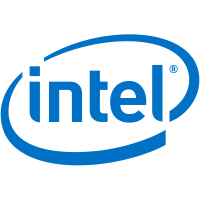NVIDIA GeForce GT 1030 DDR4 vs Intel HD Graphics 615
Comparative analysis of NVIDIA GeForce GT 1030 DDR4 and Intel HD Graphics 615 videocards for all known characteristics in the following categories: Essentials, Technical info, Video outputs and ports, Compatibility, dimensions and requirements, API support, Memory, Technologies. Benchmark videocards performance analysis: 3DMark Fire Strike - Graphics Score, PassMark - G3D Mark, PassMark - G2D Mark, Geekbench - OpenCL, CompuBench 1.5 Desktop - Face Detection (mPixels/s), CompuBench 1.5 Desktop - Ocean Surface Simulation (Frames/s), CompuBench 1.5 Desktop - T-Rex (Frames/s), CompuBench 1.5 Desktop - Video Composition (Frames/s), CompuBench 1.5 Desktop - Bitcoin Mining (mHash/s), GFXBench 4.0 - Car Chase Offscreen (Frames), GFXBench 4.0 - Manhattan (Frames), GFXBench 4.0 - T-Rex (Frames), GFXBench 4.0 - Car Chase Offscreen (Fps), GFXBench 4.0 - Manhattan (Fps), GFXBench 4.0 - T-Rex (Fps).
Differences
Reasons to consider the NVIDIA GeForce GT 1030 DDR4
- Videocard is newer: launch date 1 year(s) 6 month(s) later
- 3.8x more core clock speed: 1152 MHz vs 300 MHz
- Around 31% higher boost clock speed: 1379 MHz vs 1050 MHz
- Around 31% higher texture fill rate: 33.1 GTexel / s vs 25.2 GTexel / s
- 16x more pipelines: 384 vs 24
- 2.6x better floating-point performance: 1,059 gflops vs 403.2 gflops
| Launch date | 12 March 2018 vs 30 August 2016 |
| Core clock speed | 1152 MHz vs 300 MHz |
| Boost clock speed | 1379 MHz vs 1050 MHz |
| Texture fill rate | 33.1 GTexel / s vs 25.2 GTexel / s |
| Pipelines | 384 vs 24 |
| Floating-point performance | 1,059 gflops vs 403.2 gflops |
Reasons to consider the Intel HD Graphics 615
- 4x lower typical power consumption: 5 Watt vs 20 Watt
- 8x more maximum memory size: 16 GB vs 2 GB
| Thermal Design Power (TDP) | 5 Watt vs 20 Watt |
| Maximum memory size | 16 GB vs 2 GB |
Compare benchmarks
GPU 1: NVIDIA GeForce GT 1030 DDR4
GPU 2: Intel HD Graphics 615
| Name | NVIDIA GeForce GT 1030 DDR4 | Intel HD Graphics 615 |
|---|---|---|
| 3DMark Fire Strike - Graphics Score | 629 | 0 |
| PassMark - G3D Mark | 701 | |
| PassMark - G2D Mark | 185 | |
| Geekbench - OpenCL | 3046 | |
| CompuBench 1.5 Desktop - Face Detection (mPixels/s) | 12.486 | |
| CompuBench 1.5 Desktop - Ocean Surface Simulation (Frames/s) | 215.572 | |
| CompuBench 1.5 Desktop - T-Rex (Frames/s) | 1.238 | |
| CompuBench 1.5 Desktop - Video Composition (Frames/s) | 11.311 | |
| CompuBench 1.5 Desktop - Bitcoin Mining (mHash/s) | 18.292 | |
| GFXBench 4.0 - Car Chase Offscreen (Frames) | 1128 | |
| GFXBench 4.0 - Manhattan (Frames) | 1128 | |
| GFXBench 4.0 - T-Rex (Frames) | 2409 | |
| GFXBench 4.0 - Car Chase Offscreen (Fps) | 1128 | |
| GFXBench 4.0 - Manhattan (Fps) | 1128 | |
| GFXBench 4.0 - T-Rex (Fps) | 2409 |
Compare specifications (specs)
| NVIDIA GeForce GT 1030 DDR4 | Intel HD Graphics 615 | |
|---|---|---|
Essentials |
||
| Architecture | Pascal | Generation 9.5 |
| Code name | GP108 | Kaby Lake GT2 |
| Launch date | 12 March 2018 | 30 August 2016 |
| Launch price (MSRP) | $79 | |
| Place in performance rating | 1476 | 1477 |
| Type | Desktop | Laptop |
Technical info |
||
| Boost clock speed | 1379 MHz | 1050 MHz |
| Core clock speed | 1152 MHz | 300 MHz |
| Floating-point performance | 1,059 gflops | 403.2 gflops |
| Manufacturing process technology | 14 nm | 14 nm |
| Pipelines | 384 | 24 |
| Texture fill rate | 33.1 GTexel / s | 25.2 GTexel / s |
| Thermal Design Power (TDP) | 20 Watt | 5 Watt |
| Transistor count | 1,800 million | 189 million |
Video outputs and ports |
||
| Display Connectors | 1x DVI, 1x HDMI | No outputs |
Compatibility, dimensions and requirements |
||
| Interface | PCIe 3.0 x4 | PCIe 3.0 x1 |
| Length | 145 mm | |
| Supplementary power connectors | None | |
API support |
||
| DirectX | 12.0 (12_1) | 12.0 (12_1) |
| OpenGL | 4.6 | 4.5 |
Memory |
||
| Maximum RAM amount | 2 GB | 16 GB |
| Memory bandwidth | 16.8 GB / s | |
| Memory bus width | 64 Bit | 64 / 128 Bit |
| Memory clock speed | 2100 MHz | |
| Memory type | DDR4 | DDR3L / LPDDR3 |
| Shared memory | 1 | |
Technologies |
||
| Quick Sync | ||










